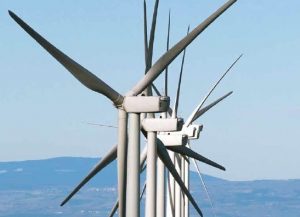GE will invest approximately €340 million to develop or expand its wind turbine manufacturing, engineering, and service facilities in four European countries—the United Kingdom, Norway, Sweden, and Germany—signaling GE’s deep commitment to the promising European offshore wind sector. “Offshore wind will play a vital role in meeting the growing global demand for cleaner, renewable energy and has a bright future here in Europe,” says Ferdinando (Nani) Beccalli-Falco, president and CEO of GE International. “These investments will position us to help develop Europe’s vast, untapped offshore wind resources, while also creating new jobs for both GE and our suppliers.”

At the core of GE’s European expansion plans is the development of its next-generation wind turbine, a 4-megawatt machine designed specifically for offshore deployment. As the largest wind turbine in GE’s fleet, it will incorporate advanced drive train and control technologies gained through GE’s acquisition of ScanWind. The 4-megawatt wind turbine will feature GE’s innovative technology that eliminates the need for gearboxes. This technology is already being demonstrated at a test site in Hundhammerfjellet, Norway, where the first ScanWind direct drive unit has been operating for more than five years.
“GE’s proven reliability on more than 13,500 land units coupled with ScanWind’s proven offshore, gearless design enables us to provide our customers the reliable solutions necessary for the offshore wind industry,” says Victor Abate, vice president of renewable energy for GE Power & Water. “These announcements lay the foundation for us to begin scaling our offshore business, technology, and supply chain locally in Europe where we see the greatest growth opportunity.”

The European Wind Energy Association expects that Europe’s offshore wind sector will grow more than 70 percent in 2010, with continued growth forecast over the next several years. If all of the offshore wind projects currently in development are completed, they could produce 10 percent of the European Union’s total electricity while avoiding 200 million tons of CO2 emissions each year. Overall, offshore wind is expected to make a major contribution in helping the European Union reach its goal to have 20 percent of its energy produced from renewable resources by the year 2020. For more information visit the company’s Web site at www.ge.com.

























